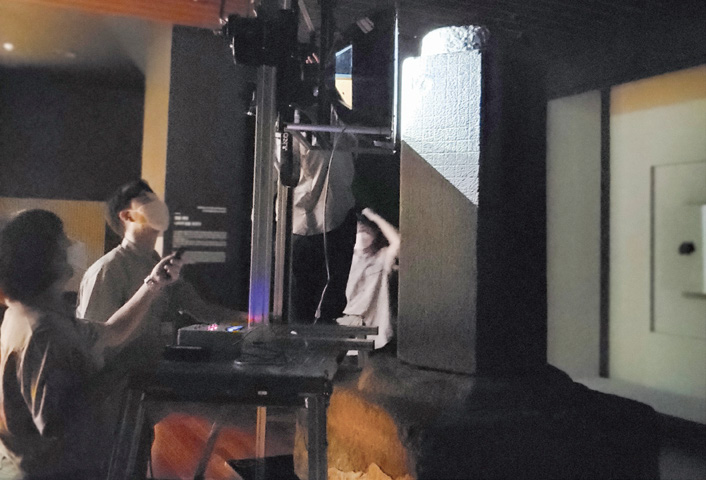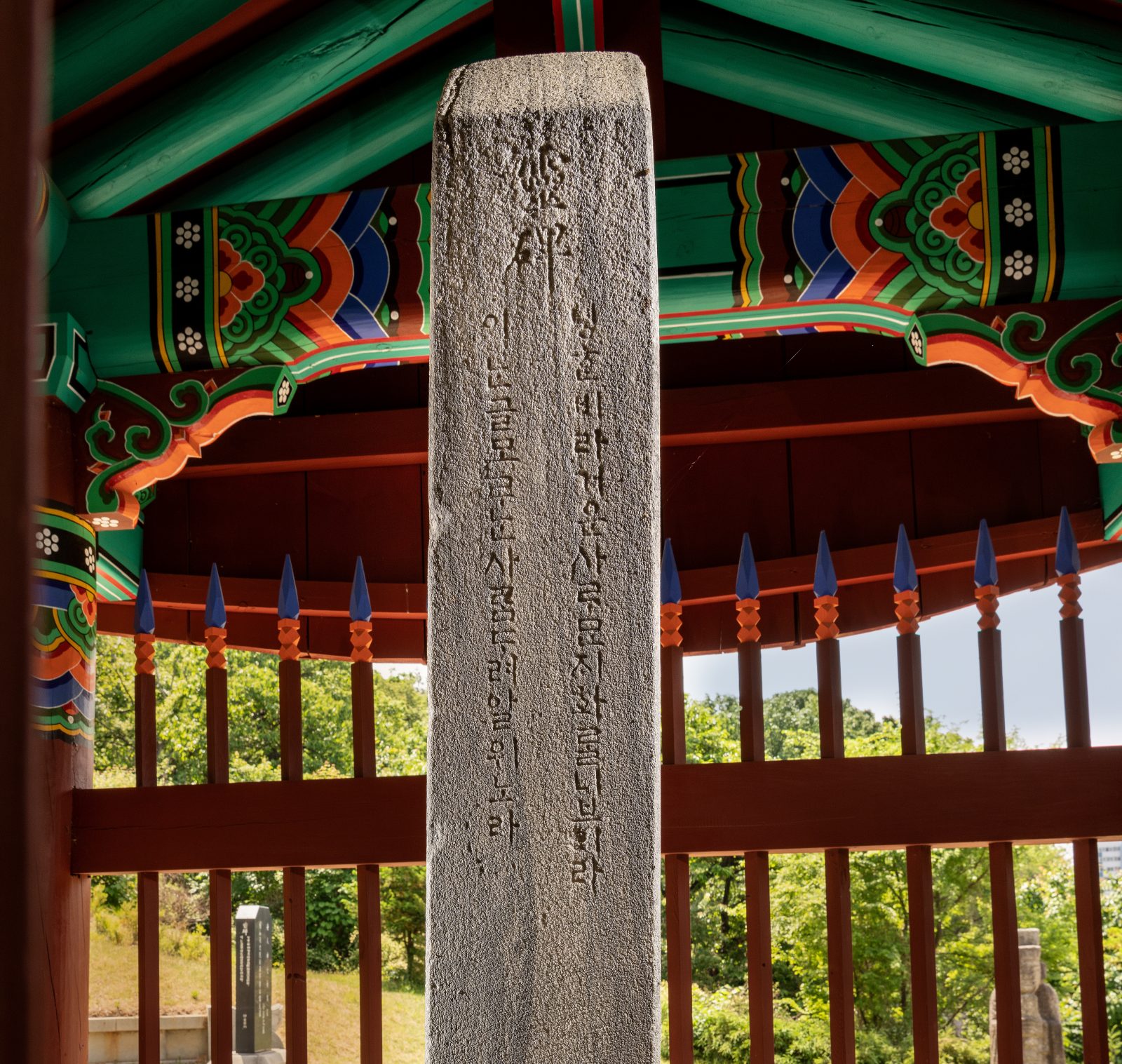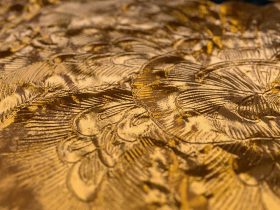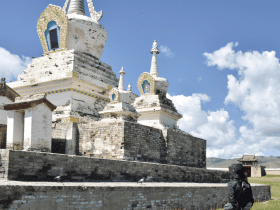Research Division of Artistic Heritage
Lee, Jongsuk


Definition of Geumseokmun
Geumseokmun refers to the inscription on metal and the inscription on stone. In a larger context, geumseokmun includes all kinds of letters left on bone or tortoise shell, wooden tablet, earthenware, roof tile and brick. Therefore, geumseokmun, or epigraph, can be defined as letters written on materials other than paper.
Origin of Geumseokmun
The origin of geumseokmun is the origin of the script, because whether it is metal or wood, it is the script that is cast or carved on the material. Typically, the origin of geumseokmun is sought from the literary relics of the region where ancient civilizations developed. For example, the Code of Hammurabi, an epigraph representing the Mesopotamian civilizations, is a collection of 282 laws inscribed on a black basalt stele using cuneiform letters by the Old Babylonian king Hammurabi in 1790 BCE. The Rosetta Stone, a major epigraph from the Egyptian civilization, is an epitaph created in commemoration of the enthronement of Ptolemy V of ancient Egypt in 196 BCE. The Indus Scripts of the Indus Civilization are in the form of hieroglyphics inscribed on square stamp seals and China, the birthplace of the Yellow River civilization, has inscriptions on bronze ritual vessels as well as oracle bone scripts dating back to 1200 BCE.
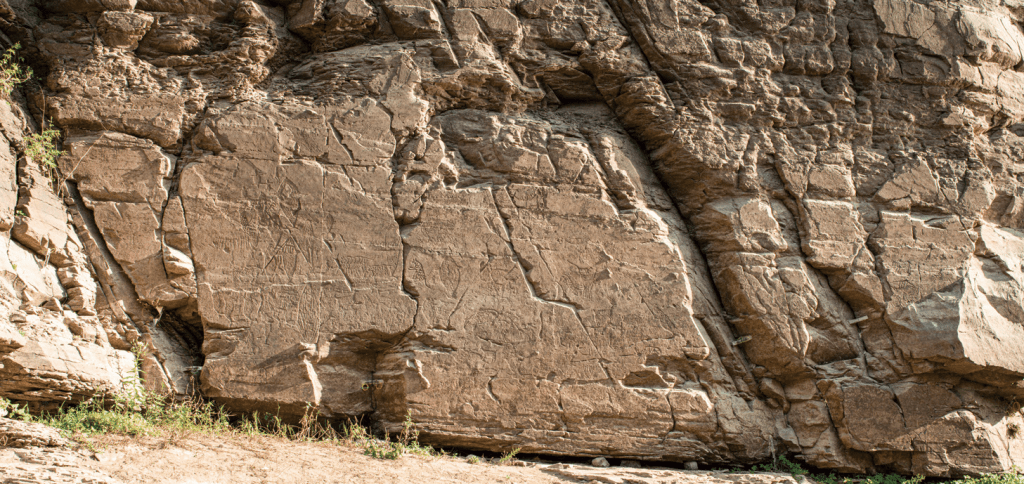

Types and Characteristics of Korean Epigraph
The origin of geumseokmun is the origin of the script, because whether it is metal or wood, it is the script that is cast or carved on the material. Typically, the origin of geumseokmun is sought from the literary relics of the region where ancient civilizations developed. For example, the Code of Hammurabi, an epigraph representing the Mesopotamian civilizations, is a collection of 282 laws inscribed on a black basalt stele using cuneiform letters by the Old Babylonian king Hammurabi in 1790 BCE. The Rosetta Stone, a major epigraph from the Egyptian civilization, is an epitaph created in commemoration of the enthronement of Ptolemy V of ancient Egypt in 196 BCE. The Indus Scripts of the Indus Civilization are in the form of hieroglyphics inscribed on square stamp seals and China, the birthplace of the Yellow River civilization, has inscriptions on bronze ritual vessels as well as oracle bone scripts dating back to 1200 BCE.


written in Hangeul (Korean
alphabet), Seoul (Treasure)
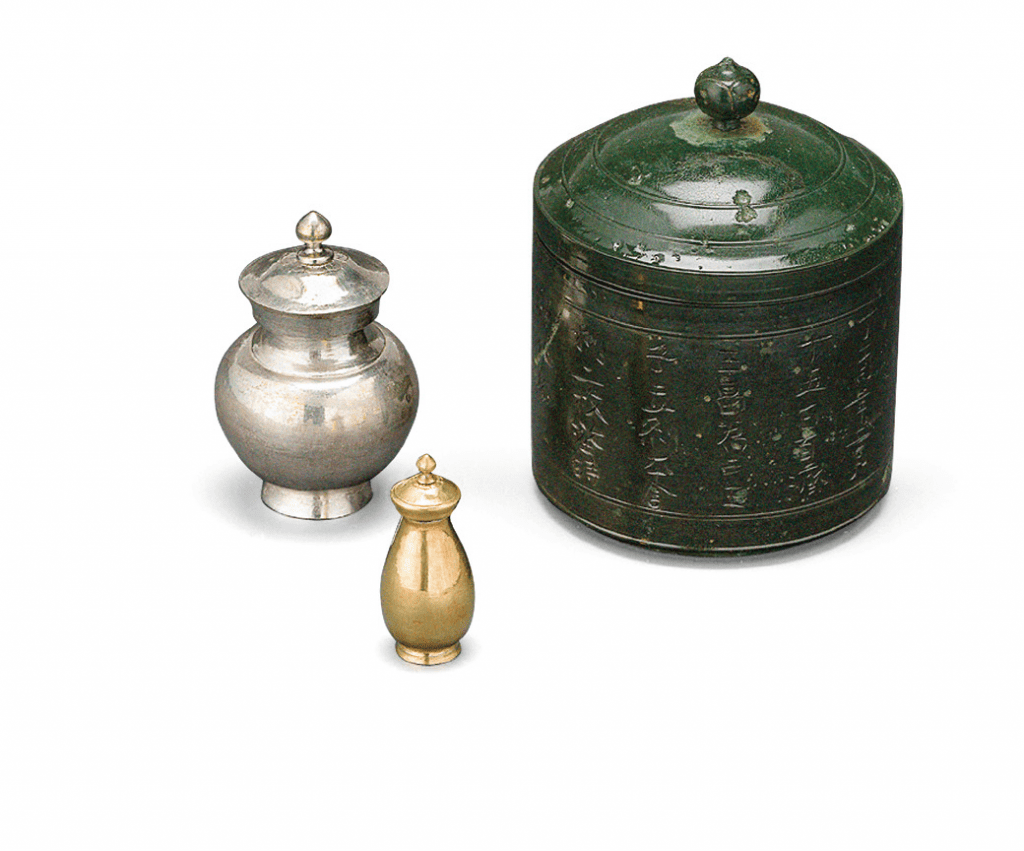

The origin of Korean epigraphs can be found in the pictographs such as the Petroglyphs of Cheonjeon-ri, Ulju, and the Petroglyphs of Bangudae Terrace in Daegok-ri, Ulju (Figure 1), which date back to prehistoric times. Since then, after Chinese characters were introduced, various types of epigraphs featuring Chinese characters have been produced in diverse materials and purposes. After the creation of Hangeul, the Korean Alphabet, in the Joseon Dynasty (1392-1910), epigraphs using Hangeul (Figure 2) also appeared. Currently, there are about 15,000 epigraphs existing in Korea and they can be classified according to their shape and content, resulting in following features.
In the Korean peninsula, epigraphs began to be produced in full fledge from the Three Kingdoms era. For example, the Gwanggaeto Stele from the Goguryeo Kingdom is outstanding in its appearance, calligraphy and its content. The Gwanggaeto Stele was erected to honor the achievements of Gwanggaeto the Great, the 19th king of Goguryeo, by his son King Jangsu in 414. This granite stele is approximately 6.39 meters tall with 1,775 characters inscribed on it. Major epigraphs of the Baekje Kingdom include the Stele for Sataek Jijeok, Buyeo; Buried Memorial Tablets from the Tomb of King Muryeong; and Reliquary from Wangheungsa Temple Site, Buyeo (Figure 3). During the Silla Kingdom, more writings on stone than metal are extant and most of the stone writings are epitaphs. The most well-known epitaph from Silla era is the four monuments commemorating the border inspection by King Jinheung of Silla in Changnyeong in South Gyeongsang Province, Bukhansan Mountain in Seoul, Hamju in South Hamgyong Province and Iwon in South Hamgyong Province (Figure 4).
During the Northern and Southern States era, when Unified Silla reigned in the south and Balhae in the north of the Korean peninsula, respectively, many stone monuments honoring kings and monks were produced. Among the metal inscriptions, the text and two pairs of celestial maiden on the Sacred Bell of Great King Seongdeok, also known as the Emille Bell, are the most well known.
Stone inscribed epigraphs take up a large amount among Goryeo Dynasty era. About 70~80% out of the total are from the stone monuments. When monks enter into Nirvana, steles (Figure 5) were erected on the ground, while when nobles or high-ranking officials pass away, epitaph tablets were buried in the tomb. In the case of metal inscriptions, production details for metal crafts such as bells, bronze drums and incense burners were en-graved, but the content is very concise.
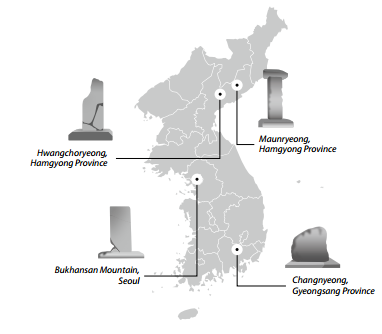

Jinheung of Silla
The amount of epigraphs increase during Joseon Dynasty, but most of those are stone monuments produced from a Confucian perspective. Stone tower steles, which were popular during Goryeo era, slowly disappeared and replaced by building splendid tombs and setting up epitaphs befitting their status as a way to emphasize filial piety for parents or ancestors. Sindobi steles, inscribed with biographical information, for kings and special monuments such as the Monument for the Victory at Myeongnyang Battle in Haenam, commemorating the achievements of Admiral Yi Sun-sin were erected. Sign boards and column couplets in palaces and seowon (Confucian academy) are also notable elements of existing epigraphs from Joseon era.
The types of epigraphs produced after modernization include sindobi and yuheobi for honoring ancestors and sihyebi for the rich who saved local residents when there is a famine and the epigraphs played a role in inspiring affection and pride for the region.
History of Korean Epigraph Research


Roman epitaphs and papyrus played a major role in the restoration of Roman history. In China, since the advent of the Qin and Han Dynasties, a variety of inscriptions on bamboo and wood as well as burial tablets enriched historical research, while text inlaid in ancient Japanese iron swords and Shōsō-in Documents and wooden tablets from the 8th century contributed to the research of Japanese history. The epigraphs of Korea are of great historical value as they are the primary sources made by the people of the time and reflect their lives and rituals. In the field of ancient history, which lacks written materials, the epigraphs are invaluable objects for research. The history of research epigraph in Korea began with Yi U (1637-1693), son of Joseon’s 14th king and calligrapher. Yi U compiled Daedong geumseok seo, a collection of some 300 rubbed copies of epigraphs from the monument for King Jinheung of Silla to Joseon era ones, in 1668.
However, it was only in the 19th century that the study of epigraph developed into the field of epigraphy. Kim Jeonghui (1786-1856), also known as his pen name Chusa, was a major figure in epigraphy. He published Geumseok gwaan rok after researching major epigraphs in Korea. He deciphered and researched the content of the monuments for King Jinheung in Hwang cho ryeong in Hamju, South Hamgyong Province and Mount Bukhansan in Seoul. Then O Gyeong-seok (1831-1879), who succeeded to Kim’s epigraphy, wrote Samhan geumseok rok, compiling a list of epigraphs since the Three Kingdoms era and interpretation of major epigraphs.
Under the Japanese colonial rule, the Japanese Government-General of Joseon surveyed epigraphs across the country for six years, produced about 1,000 rubbings and published Joseon Geumseok Chongram.
After liberation, a lot of new epigraphic materials were excavated, introduced and deciphered and books related to epigraphy were actively published. Some examples include Lee Nan-yeong’s Hanguk Geumseokmun Chubo (Korean epigraphs supplementary) (1968), Hwang Soo-young’s Hanguk Geumseok Yumun (Korean epigraphs posthumous writings) (1976) and volumes 1-7 of Cho Dong-won’s Hanguk Geumseokmun Daegye (Korean epigraph series). Annotations on epigraphic sources, including Annotation on Ancient Korean Epigraph volumes 1-3 (1992), Compared Annotation on Epigraphs of Monks in History (1993-1995) and Annotation on Epigraphs of late Silla and early Goryeo Era volumes 1 and 2 (1996), were also published. Thanks to these academic activities, the research of epigraph materials in Korea was able to take a step further. Since 2000, knowledge digitization project boomed and analysis and research of epigraphs entered a new stage (Figure 6). In 2005, the NRICH launched a web service by establishing digital data of 3,000 photos of rubbings, outlines, texts and interpretations of epigraphs from ancient times to early Joseon Dynasty.


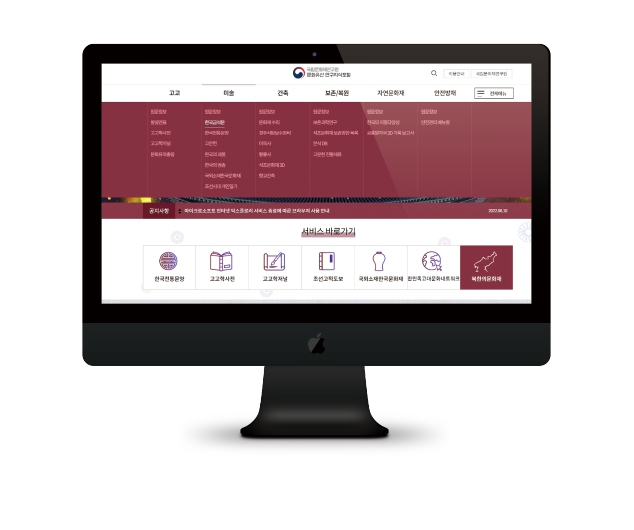

And in 2020, we started to build digital data for the “Collection of Korean Epigraph,” which has never been done until now (Figure 7). We are making a new database of Korean epigraphs by updating some 3,000 data organized 15 years ago and revamping the range and method of building data. The range of location is expanded to Korean epigraphs located outside Korea and time to include those produced until 1945 (Figure 8), building a prototype of Korean epigraphs of documentary heritage using state-ofthe-art technology. It is based on high-definition digital photography and aerial photography provides additional data on the location of the epigraph, while Reflectance Transformation Imaging (RTI) photography (Figure 9) offers more detailed image data.


